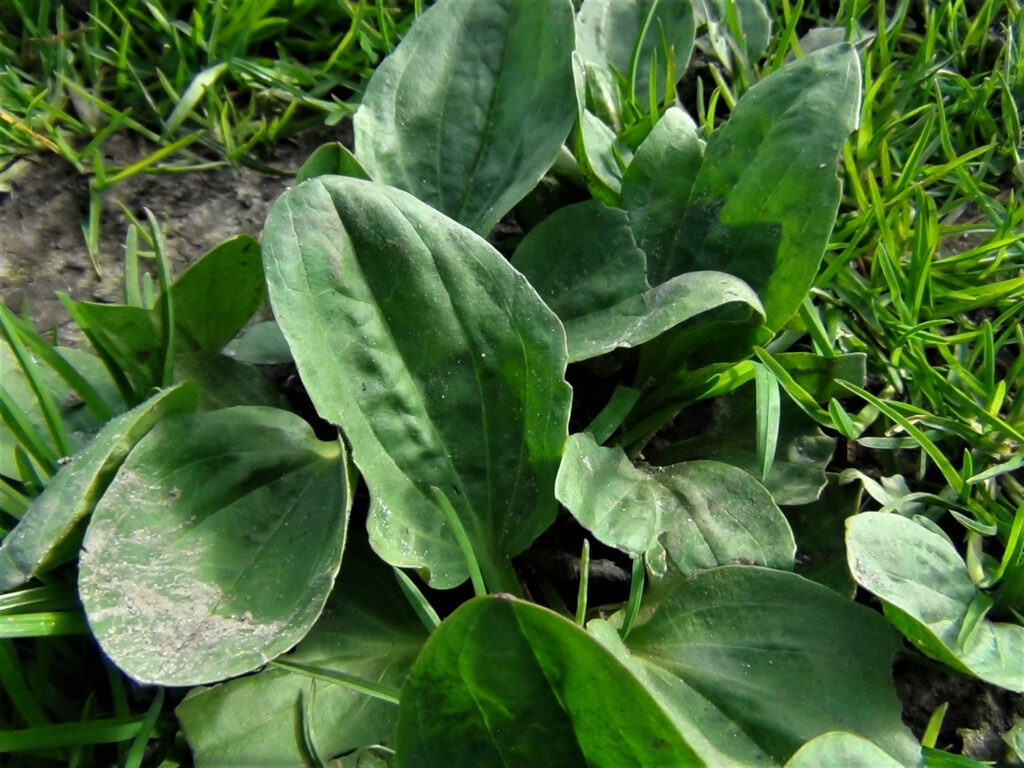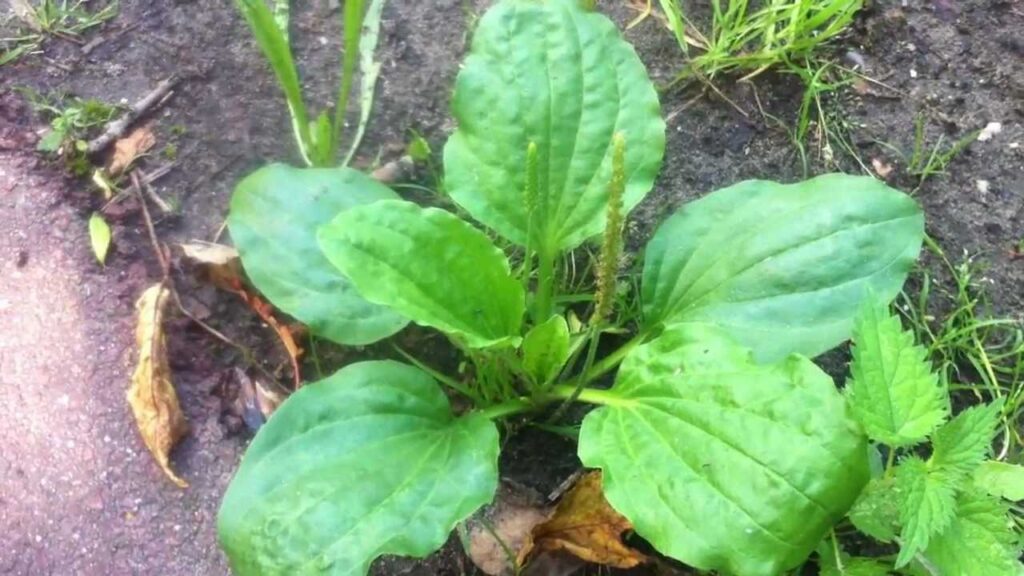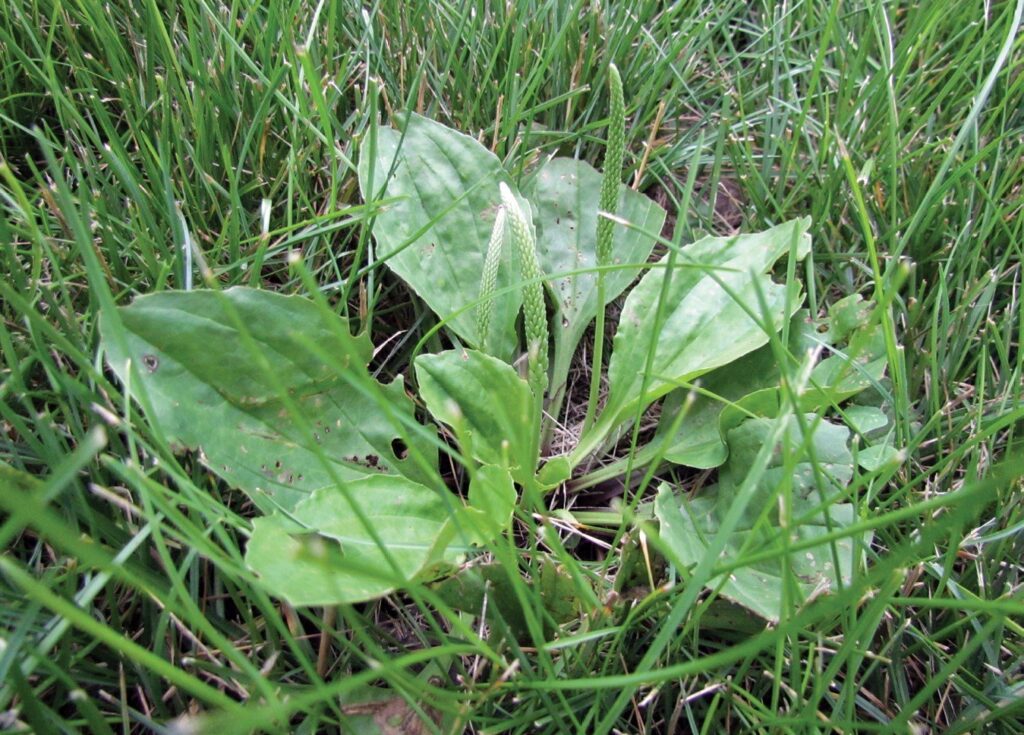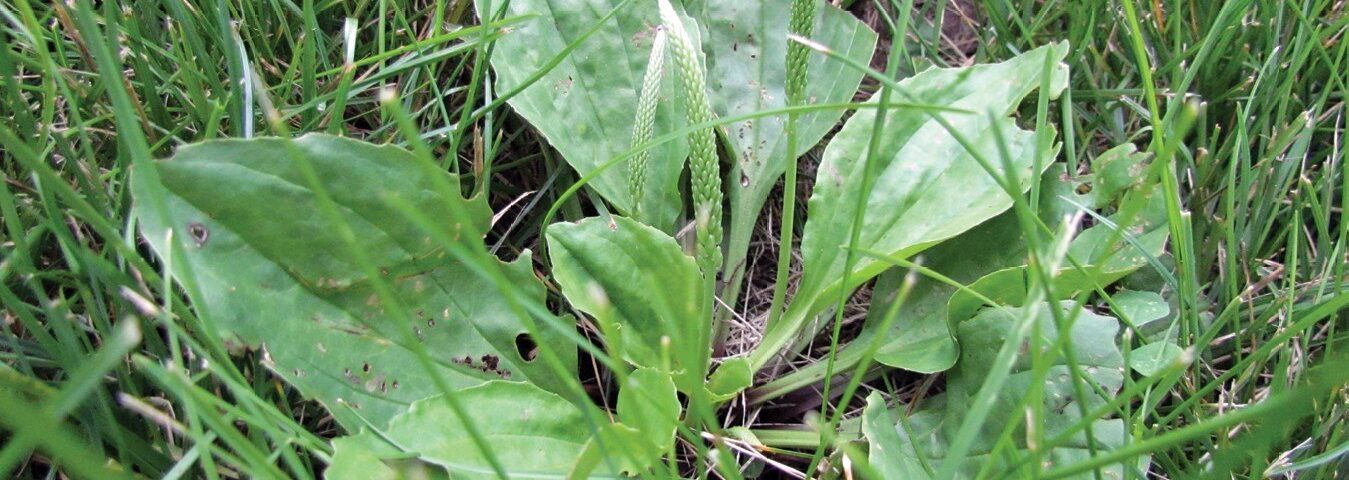Broadleaf plantain (Plantago major) is a common weed that grows in most parts of the world, including North America, Europe, Asia, and Africa. It is also known as “greater plantain” or simply “plantain.” Despite its reputation as a weed, broadleaf plantain is an edible and medicinal plant with a long history of use.
Find and Identify
Broadleaf plantain grows in a variety of habitats, including lawns, parks, roadsides, and waste areas. It is a hardy plant that can tolerate a range of soils and growing conditions, making it an ideal candidate for foragers. Look for broadleaf plantain in open, sunny areas, and be sure to avoid areas that may have been treated with chemicals.
Broadleaf plantain has a distinctive rosette of large, oval leaves that can grow up to 8 inches long and 4 inches wide. The leaves are green and smooth on the top, with a ribbed underside. The plant produces spikes of small, inconspicuous flowers that bloom from June to September. To accurately identify broadleaf plantain during foraging, it is crucial to distinguish it from other similar plants.
Prepare and Store
Broadleaf plantain leaves can be eaten raw or cooked, and they have a mild, slightly bitter flavor. To prepare the leaves, wash them thoroughly and chop them into bite-sized pieces. You can add the leaves to salads, sauté them, or wrap other ingredients with them. The leaves can also make tea, which has been a treatment for various ailments, such as digestive issues and respiratory problems, for centuries.
Fresh broadleaf plantain leaves can be stored in the refrigerator for up to a week, or they can be dried and stored for later use. To dry the leaves, spread them out on a clean cloth or paper towel in a well-ventilated area, away from direct sunlight. Once the leaves are completely dry, they can be stored in an airtight container until ready to use.
Traditional Uses
Broadleaf plantain has a long history of use as both a food and a medicine. Ancient Greeks and Romans used plantain to treat a variety of ailments, including snake bites, wounds, and digestive problems. Indigenous people in North America and Europe utilized the plant for similar purposes. Today, traditional medicine still utilizes broadleaf plantain due to its anti-inflammatory, antimicrobial, and antioxidant properties proven by recent studies.
People consume this highly nutritious plant, despite its reputation as a weed, as both food and medicine, either raw or cooked. Whether you are an experienced forager or just starting out, broadleaf plantain is a great plant to add to your foraging basket. With its distinctive leaves and mild flavor, it’s easy to identify and versatile in the kitchen. So, next time you see this “weed” growing in your yard or local park, give it a try!



Sources: Search for Field Guides
- “Edible Wild Plants: A North American Field Guide to Over 200 Natural Foods” by Thomas Elias and Peter Dykeman
- “Herbal Medicine: Biomolecular and Clinical Aspects” edited by Sheldon Lieberman and L.E.iso
- “Wild Edibles: A Practical Guide to Foraging”
